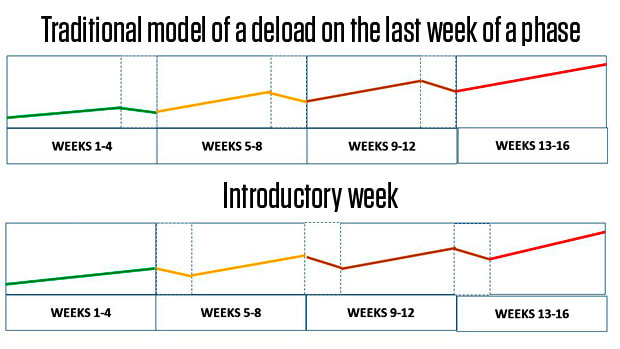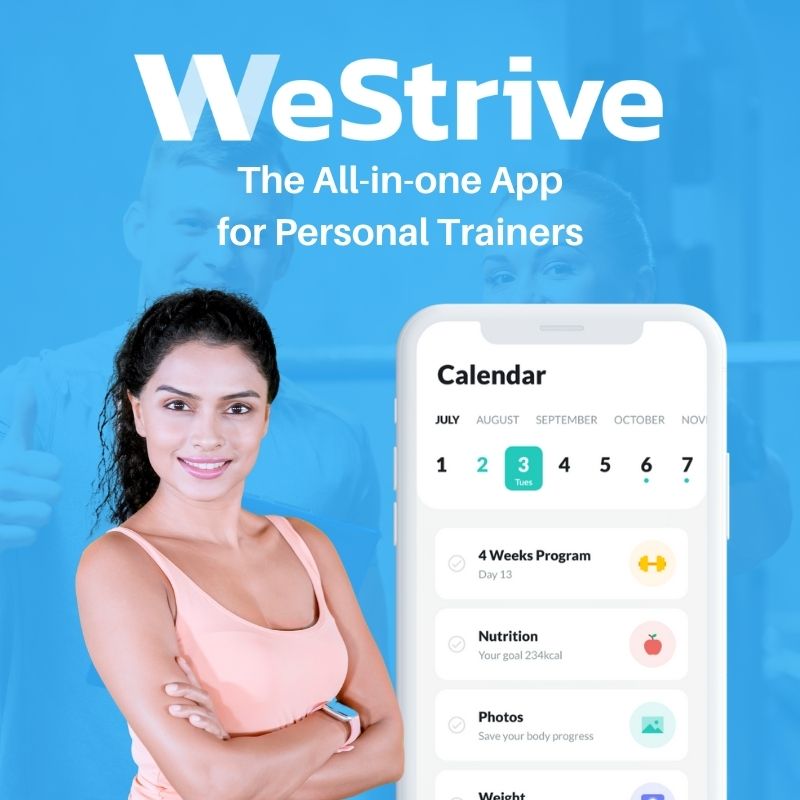|
FREE GUIDE: HOW TO LAUNCH AN ONLINE PERSONAL TRAINING BUSINESS
IN JUST 7 DAYS
✓ The new, better way of launching an online business
✓ The fastest way to create in irresistible offer ✓ A simple system to sell to clients who are interested |
|
A deload week is a planned and scheduled week of training, inside the normal training block that your client will be following. It’s not a week off involving total rest. Your client does still train for that week, but the volume and intensity of the work done will be far lower. A deload week belongs in any strength programme which progressively overloads your client, and can be used to recover physically and mentally. Why Use A Deload Week? A deload week is used to recover from one phase of training before starting another. When training athletes, this helps to mitigate any risk of overtraining and becoming injured. When training general population clients, it’s still vital as it gives their muscles a chance to recover and repair, and this is how they get stronger. Similarly, their connective tissues will have an opportunity to repair which has a direct impact on joint and ligament health. The benefits don’t stop at the skeletal-muscular system though. There are restorative properties in the deload week for the endocrine system too. Taking a deload week can restore testosterone levels and cortisol levels so that muscle growth can continue at an optimal rate. Finally, but no less importantly, a deload week means your client can take a gentler approach to their training for a week and recover fully from the challenges of their normal training. Knowing that there’s a deload week coming up can give them the ability to train with intensity in the weeks leading up to it. Lifting intensely for weeks on end puts a significant strain on the Central Nervous System (CNS). Creating an intentional stressor on the body through intense training is interpreted by the body as any other general stress response. At first, it’s fine and copes well. It even adapts to the stimuli and muscles grow. Eventually though, if the intense training continues there’s a risk of injury unless a deload week is used to reduce that physical stress response. How to Programme A Deload Week? Broadly speaking, you can use three types of deload weeks for your clients. 1. Reduce the load This is a simple adjustment because the other variables, such as the number of sessions stay the same. This is important if your client has worked hard to get into a routine with their training. You simply swap to lifting lighter weights. The recommendation is around 40-60% of their 1RM. If your train your client remotely, simply tell them to use half the weight they normally would. 2. Reduce the volume This has a similar effect but is better suited to athletes approaching a competition. You keep the weights the same, but your client only performs half the sets you normally programme for them. 3. Change the exercises you choose This is a great option if your client’s priority is simply training for health. It involves swapping to a totally different workout for the week, such as replacing a heavy powerlifting programme with a bodyweight circuit or going for walks and bike rides. This is something referred to as “active recovery”. When Do You Programme A Deload Week? While you can take a deload week if you feel the client needs one. This might be indicated because they are feeling week, consistently missing heavy lifts (which could indicate their CNS is overburdened), their joints are sore and they report that their motivation to train is low. However, if you’re programming for your clients, a deload week should ideally be intentionally factored into the plan before they get too sore. When planning the deload, you’ll likely take into account how experienced the client is, what the client’s goals are, their age and the style of training you’ve been following in terms of intensity and volume. 3 weeks on, 1 week off This is a great option for athletes who are in-season, who need to give it everything they’ve got during their session or someone who needs a few extra recovery days to perform at their best. Every 6-8 weeks This is probably where most clients will fall, as it includes such a broad range of people, including performance athletes, competitive lifters and most recreational but somewhat experienced lifters. Every 12-16 weeks This is likely to include bodybuilders who are actively competing or intermediate lifters. From 0-3 times a year This could include people who are brand new to lifting with less than a year’s experience. They may not be placing enough stress on their body that they need to take time away. This could also include people following an incredibly strict regime to optimise programming, nutrition and sleep. But most people with more than a year of lifting under their belts will need to rest some of the time. Conclusion The purpose of a properly timed, planned and executed deload week is to restore your client physically and mentally. They should be returning from a deload week properly rested and well adapted. Their body will be fully recovered and their mind will be focused for the next phase of pushing hard.
If your client is reluctant to take a deload week, remind them that these intentionally programmed weeks lead to new PBs, and the ability to adapt to new levels of stimuli. Being able to lift more weight more often means that they’re making progress. The deload week is pivotal in letting the process of growth and strength start over. Using a deload week can keep your clients injury free, and should exist as part of a longer workout block. You can reduce volume, intensity or opt for a totally different workout and how often you programme these weeks will depend on the client’s goals, their chronological age, and their experience level. After the deload week is over, consider asking your client the following questions:
If they answer yes to these questions, return to the programme as it was before the deload week. If they answer no, some changes may be made to reflect their goals, or to swap individual movements for something they enjoy more. |
Our All In One Platform
Check out out all in one business & marketing platform for personal trainers!
WEBSITE BUILDER | FUNNELS |MEMBERSHIPS | SCHEDULING| EMAIL MARKETING| PAYMENTS| CRM | AI ASSISTANT | SURVEYS
Popular Articles
Trusted Partners
We work closely with some of the best service providers in the fitness industry.
Categories
All
|








